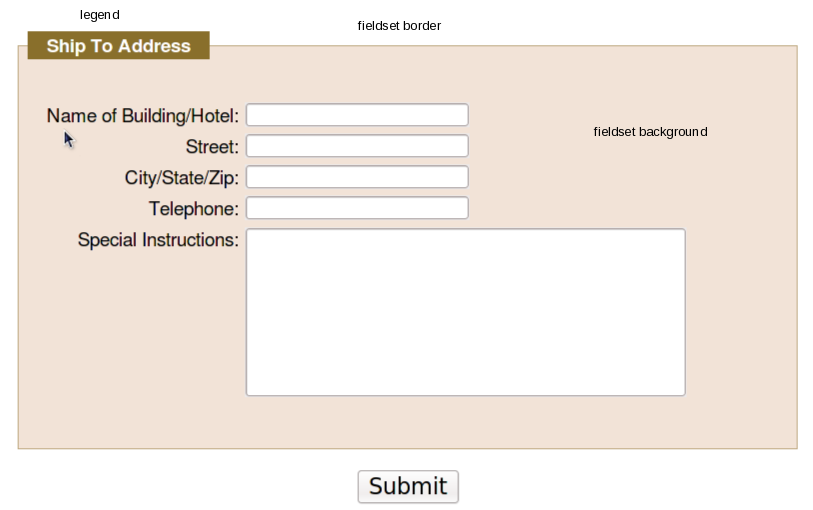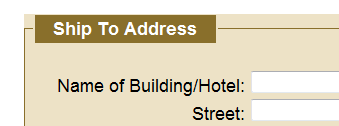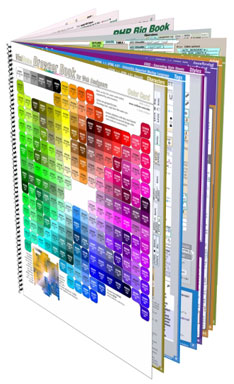Somehow, in my 10 years of working with HTML, I had missed the fieldset and legend tags. I’ve just started in on a web site redesign where they can be used to great effect and nice semantic markup. The fieldset tag is intended to be used as a container for grouping related input items in a form. By default, the fieldset has a transparent background and a thin black outline around the fields. The fieldset can contain a legend tag that appears by default in the upper left corner of the black outline as a title for the grouping. Both elements can be be modified with CSS styles to match and complement the rest of the page design. Here’s the basic HTML snippet:
<form...>
<fieldset><legend>Ship To Address</legend>
<br clear="all" />
<label for="Building_or_Hotel">Name of Building/Hotel:</label>
<input type="text" id="Building_or_Hotel" size="25" maxlength="50" />
<br clear="all" />
...
</fieldset>
And the applicable CSS to make the form look pretty includes:
/* Styles for legends, the title atop the fieldset */
.dataform legend {
background-color:rgb(137,111,43);
color:white;
font-weight:bold;
margin-left: 0.5em;
padding:0 1em 0 1em;
}
/* Fieldset groups a set of inputs in a visual container */
.dataform fieldset {
border-color:rgb(137,111,43);
border-style:solid;
border-width:1px ;
background-color: rgb(93%,89%,78%);
}
Results in a data entry form that looks like this:

Using CSS to add visual effects to the elements can yield some pretty sharp results while still having the speed and minimal bandwith of lightweight HTML and CSS text files. In addition, using the semantic fieldset and legend elements provides additional information about the form fields and their relationships in a machine-readable format, rather than just splattering a bunch of colored div boxes and styled text on the form. This is a great aid to tools used by the vision-impaired to provide more context to their users, and to search engines trying to derive the context of your forms.
Compatibility between different browsers is not too bad, though things could improve a bit. FireFox 3.5x, Chromium 4.0.285.0 (on Fedora, thanks, Spot!) and Safari 4.x appear dead-on the same (the screenshot above is FireFox 3.5.5), but there is an outlier and no one should be surprised to discover it’s Internet Explorer. Even in version 8, perhaps the most compatible browser Microsoft has shipped since the now-legendary IE5.5/Mac, things are just different. For some reason, the IE8 developers decided that the background color of the frameset should extend out over the border, to the edge of the legend, resulting in this less attractive appearance instead:

For IE7, the background color doesn’t appear at all, which might actually be better than to have it appear incorrectly. (Update: no, my bad, it just doesn’t like rgb values expressed as percentages.) So the appearance definitely won’t be as sharp for your IE users as for any other browser user. (Yet another reason to encourage your clients, friends, associates, neighbors and strangers on the street to avoid Internet Explorer. We can eliminate it in our lifetimes.) (UPDATE: there are, of course, work-arounds. Here are a few suggestions that might work for you from Sitepoint and CommunityMX and Matt Heerema.)
So, the next time you’re called upon to draw up an HTML data entry form, keep in mind that you can group your elements with fieldsets and use legends to add more contextual information to your design.


